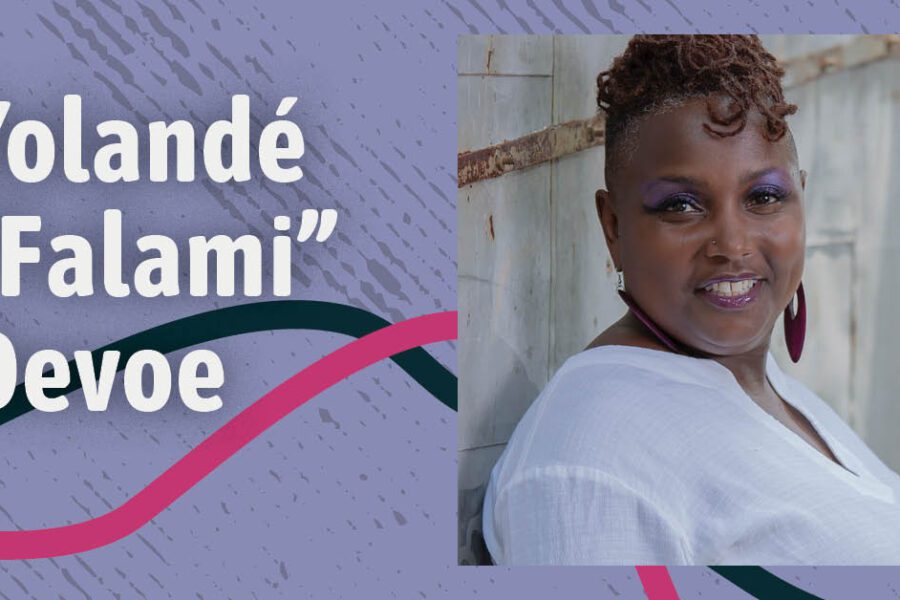In Field Notes, faculty members share their experiences and insights into some of the most pressing questions in their fields.
Having spent the past decade teaching mindfulness to educators from around the U.S., I’ve been watching with interest as the field has evolved swiftly from adult development and personal growth to mindfulness for teachers as a form of stress reduction, relaxation, and coping during difficult times. This rebranding got especially amplified during the pandemic, when teaching conditions in the U.S. went from merely difficult to completely overwhelming in just a few weeks and have, frankly, never returned to their prepandemic level. It was during this time that the phrase “self-care” emerged as a theme. The idea seemed to be that if teachers were offered healthy snacks, chair massage, yoga, and meditation, this could relieve the accumulated stresses of the job. Interestingly, teachers themselves report that what they need most is “more time and space to do their jobs well,” but yoga is nice, too.
Part of why mindfulness has been tossed into the “self-care” basket of practices is because here in the U.S., the secular mindfulness movement has been commercially advertised as a means of stress reduction and relaxation. While a review of research in neuroscience does show that mindfulness practices can help people cope with extremely stressful situations, the process of getting to those benefits can be a long one and requires a lot of time, resilience and dedication to practice. Cultivating and maintaining a mindfulness practice typically takes resources. It takes time, access to teachers and teaching tools, and, ideally, a community of people with whom to share your experiences. It’s much more like taking up a new hobby or exercise routine than anything else.
There seems to be a misperception that practicing mindfulness is sort of like taking a relaxing bubble bath, after which everything will seem much better. This logic somehow implies that problems facing teachers are related to their own ability to deal with stress, and if they could just be less stressed, the problems would feel resolved. This is both insulting to teachers and attempts to brush over serious problems and inequalities in our educational system.
Here’s what mindfulness for teachers cannot do. It cannot create fair and equitable working conditions for teachers. It cannot make our students’ lives outside of school easier for them, nor can it make their behavior and learning needs easier for us to handle. It cannot erase the challenges of working within systems of oppression that make school harder for way too many students and teachers in our society. Finally, mindfulness cannot take away the pain inherent in this human life. It just can’t.
Teachers in our program often notice that beginning or deepening a mindfulness practice can actually increase their awareness of distressing work situations and their own reactive states. It makes us more conscious of buried feelings and patterns of behavior that we’d rather not see. Well-known meditation teacher Tara Brach describes an interaction between a teacher and a student, where the student approaches the teacher in frustration and says, “I thought meditation was supposed to make me feel better, but now I just have all these difficult emotions coming up that I never noticed before.” And the teacher says, “Yes, see! Now you are feeling better than you were.”
When people first begin to practice mindfulness meditation, we often become even more acutely aware of our own suffering and the suffering of those around us. If we are in a place on our personal journey in which we are dealing with life trauma or traumatic stress, our experience of that stress can be amplified by silent meditation practice, and, although mindfulness and meditation can ultimately help people work with traumatic stress and even PTSD, this requires skillful and well-trained teachers, possibly supportive therapy, and more specialized instruction than you can get from a phone app or self-guided book.
If all of this sounds kind of painful and time-consuming, it can be. When mindfulness is recommended to teachers as wellness, self-care, or a relaxation technique, they can feel a bit betrayed to discover that these benefits of the practice often come only after substantial commitment and hard work. Maybe a better way to frame mindfulness for teachers would be as social and emotional learning (SEL) for adults. It’s also about reflective teaching practice. For teachers to make the most of mindfulness approaches in the classroom, they need to be willing to engage deeply and somewhat publicly in reflecting on their teaching practice, classroom presence, and personal conditioning.
The Mindfulness for Educators program at Antioch University offers this kind of atmosphere to support teachers to take a deep dive into their teaching lives and reflect skillfully and with self-compassion on what they find. We use tools from the field of modern mindfulness and adult development, along with practices from Buddhist and other contemplative traditions, and teacher reflection processes created by scholars and practitioners in the field to support teacher learning. When all of these factors come together, teachers report the kind of professional growth and adult SEL that leads to transformation in the classroom.
Here are some of the insights that graduates of our year-long Mindfulness for Educators program report taking away from the program.
- We can get to know and make friends with our own mind.
- We don’t have to identify with or even believe the thoughts that the mind produces.
- When we attend closely to our mental and behavioral habits we can often see choices that we did not see before.
- We can change our thinking patterns and our behavior in the classroom.
- When we change our behaivor and approach, the people around us often change too.
- Mindfulness is not a quick fix but a new approach, a way of being in the classroom that can have a positive impact on our experience and our students.
- Developing kindness and compassion for ourselves and others can make a profound difference.
- We are all on a developmental journey, and everyone has to get to know their own conditioned habits of mind and behavior in order to make progress in life.
- Working with other teachers on these important aspects of teaching is better than doing this work by yourself.
- Students seem to benefit emotionally and academically when teachers are better regulated and more self-aware.
One of the biggest benefits of learning about and practicing mindfulness as a teacher is that it allows you to make friends with your own mind. You learn to see your own patterns of behavior, especially in the classroom. As you develop this self-awareness, you can examine closely how your patterns of behavior intersect with your students’ patterns to create the conditions of learning for the whole group.
Relatively small amounts of time outside of the classroom practicing a variety of mindfulness approaches builds our automatic capacity to access those same neural pathways in the classroom. Gradually, we begin to see shifts in our conditioned behavior. We pause before reacting to a student. We automatically shift to compassion for ourselves or for others instead of adding fuel to a brewing conflict. We interrogate our own habit patterns and begin to see how we contribute to our own suffering and that of our students. And we start to see how we can stop doing that and instead start operationalizing our own intentions for classroom culture and student learning rather than feeling constantly frustrated and disappointed in our own reactivity or with our students and colleagues.
In their program feedback, students discuss themes like being much more aware of their bodies and the ways that emotions play out physically for them, having more compassion for themselves and for others, being able to access equanimity when circumstances are beyond their control. They also report a reduction in feeding into dramas–both with students and colleagues and an increased ability to harness the power of intention to stay “on course” in their work lives.
Together, these changes in the inner landscape of teachers can lead to subtle but noticeable shifts in the external conditions in the classroom for students. When a teacher is well-regulated, they are more able to focus their attention on students and their learning, which is critical for student success. Mindful teachers are also better able to help students manage their own emotions, whether that’s in relation to anxiety about tests or school success or getting along with peers and adults. Taken altogether, the addition of a mindful approach to teaching and learning seems to be a win-win for students and teachers alike.

Susan Dreyer Leon, EdD
Susan Dreyer Leon, EdD, has been AUNE since 2003 and serves as Chair of the Education Department. She is also the Coordinator of the Mindfulness for Educators program. A former alternative public high school teacher and leader in New York City and in Vermont, her 30-year career in education has focused on education as a pathway for personal and community transformation. Whether working with disenfranchised youth or mid-career teachers, she believes in the power of strong learning communities to create new opportunities for growth that help people realize their full potential.





